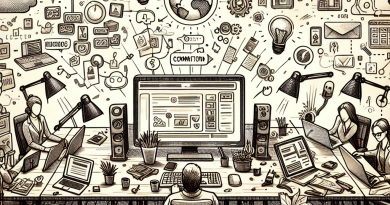From Chaos to Control: 7 Productivity Boosts Every Gig Worker Needs
In the ever-evolving digital economy, gig workers juggle multiple projects, clients, and platforms on a daily basis. As dynamic as this lifestyle may be, it often leads to burnout and subpar performance if productivity isn’t carefully managed. Young professionals stepping into the gig economy—or transitioning into balancing multiple gigs at once—must adopt strategies that turn clutter into clarity. At Gigonomy, we believe the right practices and tools can dramatically improve your workflow. Below is a before-and-after look at seven key productivity shifts that transform freelancer frustration into freelance freedom.
1. Scattered Scheduling vs. Centralized Calendar
Before: You rely on multiple platforms—email, paper notebooks, calendar apps—and forget appointments or deadlines.
After: Use an integrated digital calendar like Google Calendar or Microsoft Outlook to organize all gigs in one place. Set reminders, recurring deadlines, and block focus time. Now, you never miss a beat.
2. Reactive Work Habits vs. Proactive Time Blocking
Before: You respond to emails, messages, and gig assignments as they arrive, often switching tasks frequently.
After: Implement time blocking to dedicate chunks of your day to specific types of work. For example, mornings for creative output, afternoons for meetings. This proactive approach reduces cognitive overload and boosts productivity.
3. Disconnected Communication vs. Seamless Collaboration Tools
Before: You communicate through clunky email threads and unreliable messaging platforms, leading to missed updates and lost time.
After: Adopt unified communication platforms that enable fast messaging, call routing, and client communication tracking. Tip: Check out the latest communication tools & features at www.conxhub.com.
4. Manual Invoicing vs. Automated Finance Management
Before: You manually create invoices, track payments, and handle taxes without a system, risking income gaps and errors.
After: Use financial tools like Wave, FreshBooks, or QuickBooks tailored for freelancers. Automate recurring invoices, analyze income streams, and plan for tax season efficiently.
5. Overcommitting Projects vs. Strategic Gig Selection
Before: You accept every offer, hoping more work equals more income. Burnout quickly follows.
After: Evaluate gigs based on long-term value, time investment, and client compatibility. Create a criteria checklist before saying yes. This allows you to focus on high-value engagements that align with your skills and availability.
6. Passive Learning vs. Active Skill Development
Before: You rely on existing skills without setting time aside for growth, risking obsolescence in a fast-moving digital industry.
After: Allocate an hour a week to upskilling—enroll in a course, attend a webinar, or read industry blogs. This continual growth ensures long-term competitiveness in balancing multiple gigs.
7. Work-Life Imbalance vs. Mindful Boundaries
Before: You work evenings, weekends, and in-between moments, blurring personal and professional life.
After: Define working hours and disable notifications outside that window. Use mindfulness apps or schedule downtime to recharge. Productivity isn’t about doing more—it’s about doing better within limits.
In conclusion, the digital gig economy doesn’t have to mean disorganization and stress. With intentional habits and the right digital infrastructure, young professionals can transform how they manage time, clients, and income streams. These before-and-after productivity strategies empower you to handle the demands of balancing multiple gigs with confidence and clarity. Check out the latest communication tools & features at www.conxhub.com to supercharge your workflow today.




